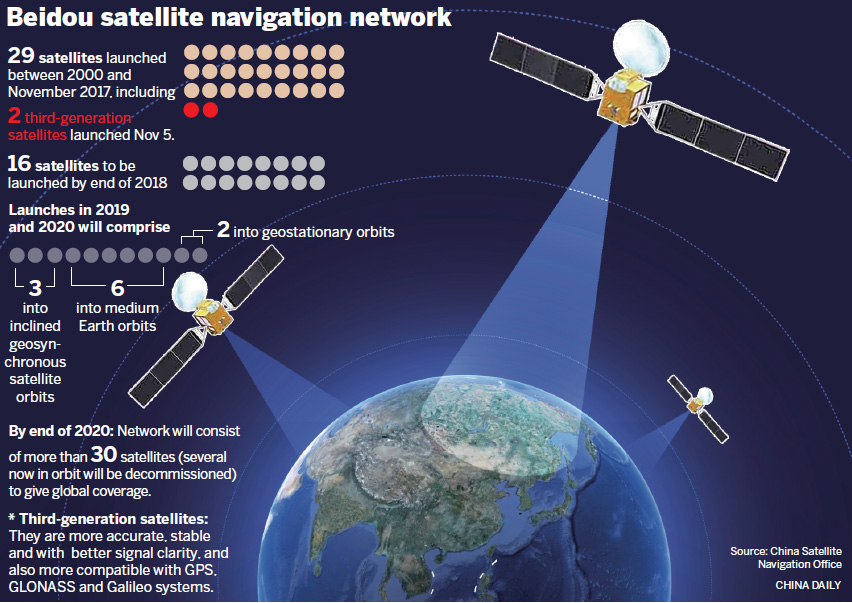Chinese scientists have reportedly developed a new radar technology that can track and detect the US Air Force’s F-22 Raptor, one of the world’s most advanced stealth fighter jets.
This innovation reportedly leverages signals from China’s BeiDou navigation satellite system, Chinese media reported.
The new radar method is described as a cost-effective solution that relies on a simple receiving antenna. This makes it easier to deploy in various locations.
Unlike traditional radars, this system does not emit signals, which significantly reduces the risk of revealing its own location—an essential advantage during military operations, the SCMP report claimed.
This breakthrough was detailed in a peer-reviewed paper published in the Journal of the National University of Defense Technology. In it, the research team used an F-22 Raptor as a hypothetical target to demonstrate the radar’s capability.
B-2 ‘Stealth Bomber’ Airstrikes: Australia Confirms Its Airbases Supported Ops To Strike Houthis
With the use of BeiDou signals, the radar can detect refraction patterns caused by stealth aircraft. These patterns create unique echoes, allowing scientists to estimate the type and location of the aircraft.

BeiDou, China’s global navigation satellite system, has nearly twice the number of satellites as the USA’s GPS, providing strong global coverage.
The researchers describe the system’s signals as stable, continuous, and precise, making it suitable for illuminating small or difficult-to-detect targets. This feature is especially useful in identifying stealth aircraft, which are designed to minimize radar signatures.
However, the scientists acknowledge the challenges in utilizing these signals for detection. The signals refracted by stealth aircraft are often weak by the time they reach the ground, and they can be further obscured by reflections from buildings, trees, and other environmental objects, creating interference.
Ejected From F-35, Blocked From Eurofighters, Turkey May Turn To China’s JF-17 Thunder – Media
To address these complications, previous passive radar systems required complex dual-channel receiving structures that needed a reference antenna pointed directly at a satellite. This traditional approach added both cost and complexity to the radar systems.
In contrast, the new radar design proposed by the Chinese team introduces a novel “blind detection” method, which operates with a single receiving antenna.
Footage Shows Yahya Sinwar ‘Attacked’ Israeli Drone With A Stick; UAV Captures His Last Moments
This eliminates the need for a reference signal, significantly reducing both hardware costs and computational demands. The simplified structure also makes the system easier to deploy and more resistant to enemy jamming, enhancing its reliability in a wartime scenario.
China’s New Radar Technology
If Chinese claims are accurate, the emergence of this new radar technology could significantly impact the effectiveness of stealth fighters.
Known for its ability to evade enemy radar and air defenses, the F-22 relies heavily on its stealth capabilities to engage ground and air targets.
Projected performance metrics from the Chinese researchers also indicate that the new radar technology could be utilized to detect other stealth aircraft, including the F-35.
Michigan-based Defense analyst Peter Suciu explained that stealth technology does not make an aircraft invisible to radar; rather, it is intended to delay detection and tracking.
Therefore, it remains possible for Chinese radar systems to track the F-22 Raptor under certain conditions. An important consideration is the F-22’s operational context, such as whether it is on a “ferry mission” with additional fuel tanks or whether the F-35 is loaded with ordnance that exceeds its internal bomb bay capacity.
U.S. Submarine Crash: China Answers Why Nuke-Powered USS Connecticut May Have Met An Accident In SCS
Meanwhile, this alleged radar breakthrough is attributed to a unique algorithm conceived in 1991 by Goran Zivanovic, a computer scientist in Belgrade, the capital of the former Yugoslavia.
Zivanovic devised an innovative method for detecting hidden cyclic frequencies in electromagnetic signals. However, after publishing his work, he seemingly vanished from academia, coinciding with the dissolution of Yugoslavia a year later.
His significant contributions went largely unnoticed, and for the past 15 years, no Western scholar has cited his research, leaving his groundbreaking findings shrouded in obscurity.
According to the SCMP report, in contrast to its obscurity in the West, Goran Zivanovic’s idea has garnered considerable respect and application within China, particularly in areas such as radar, communication, and sonar technology.
Building on Zivanovic’s foundational algorithm, the Chinese research team has made major enhancements, adapting it for the detection of stealth target signals.
In a series of simulation tests, the upgraded algorithm demonstrated efficacy by successfully discerning the distance, direction, and speed of three stealth targets amid radio noise.
This advancement not only showcases the algorithm’s potential but also highlights its role in strengthening China’s capabilities in tracking advanced military assets, furthering the nation’s strategic objectives in the realm of defense technology.
China’s Claims Of Stealth Detection Technology
The development marks another step in China’s efforts to advance its military technology, particularly in addressing the challenge posed by stealth aircraft like the F-22, which are known for their ability to evade radar detection.
This latest claim is just one in a series of assertions by Beijing about its advancements in anti-stealth technology.
Earlier this year, in April, Chinese researchers affiliated with the country’s air force claimed they had developed a radar system capable of detecting stealth aircraft, including the F-22.
In September, new claims surfaced that Beijing could track stealth jets using Elon Musk’s Starlink satellites. That same month, Chinese scientists announced the development of a radar capable of detecting long-wave signals reflected by the ionosphere, potentially enhancing the ability to spot F-22s.
In 2022, reports indicated that Chinese engineers had created a compact infrared search-and-track (IRST) system capable of identifying the heat signature of high-speed aircraft from considerable distances. IRST technology is essential in detecting stealth planes, as reported by EurAsian Times.

China’s interest in tracking stealth aircraft isn’t new. Back in 2016, Chinese state media claimed the People’s Liberation Army (PLA) successfully monitored US F-22 Raptors over the East China Sea.
Additionally, some Chinese commercial satellites powered by artificial intelligence reportedly tracked F-22 jets through cloud cover.
These developments underline China’s concern over the threat posed by American stealth fighters. Studies by the Chinese military have explicitly highlighted the F-22 and F-35 as “significant” risks in regions like the South China Sea and the Taiwan Strait.
Despite China’s bold claims regarding its advancements in detecting stealth aircraft, none of these assertions have been independently verified. Military experts and analysts, those consulted by EurAsian Times, have frequently expressed doubts about the feasibility and practicality of such technologies.
They question whether these developments are grounded in reality or are simply theoretical concepts yet to be proven in real-world scenarios.
Some experts suggest that China’s claims could be exaggerated, potentially serving as a strategic narrative aimed at projecting technological superiority rather than reflecting genuine breakthroughs in military capabilities.
- Contact the author at ashishmichel(at)gmail.com
- Follow EurAsian Times on Google News




